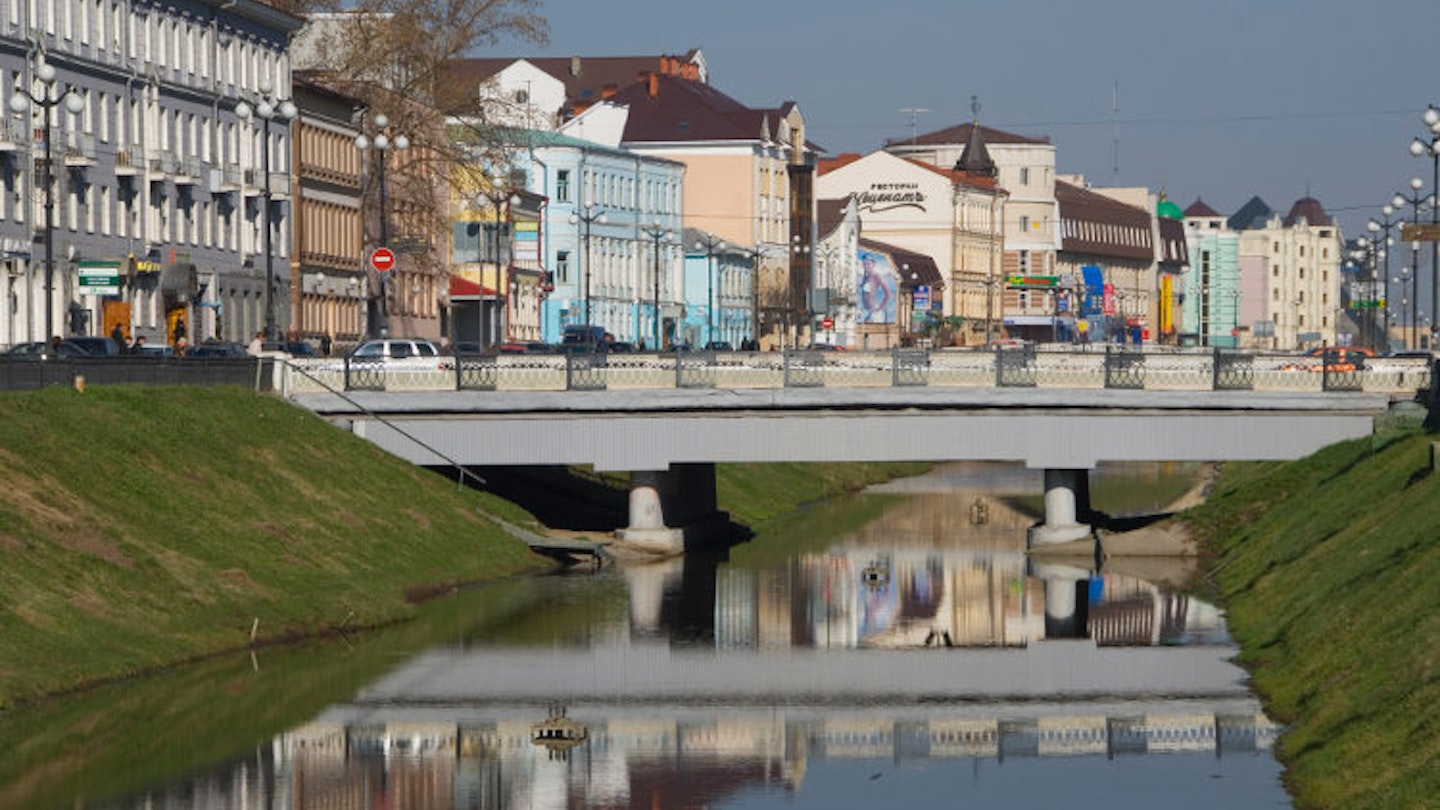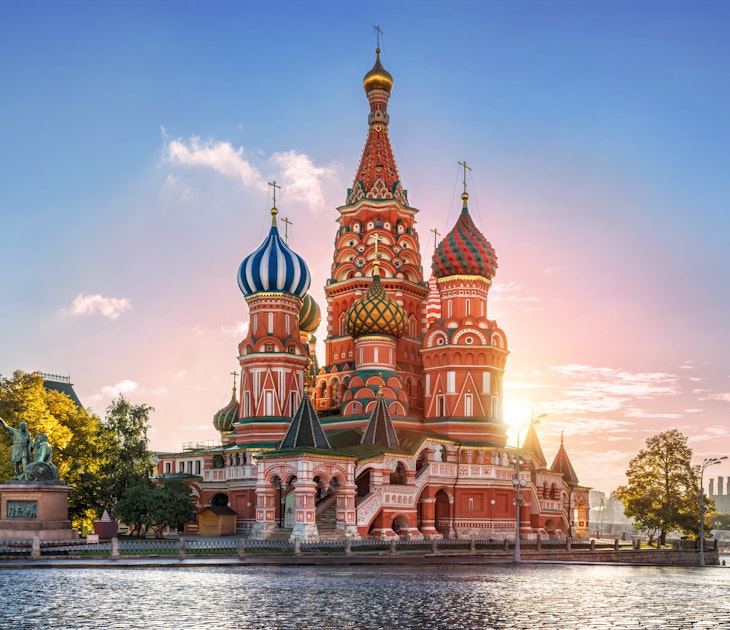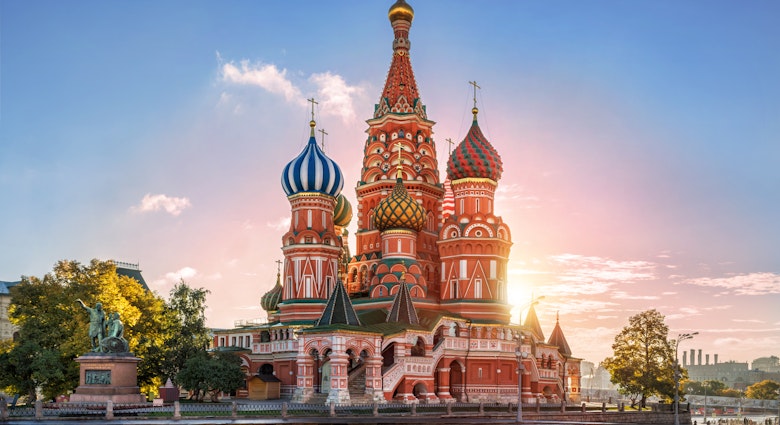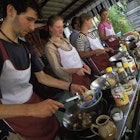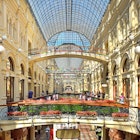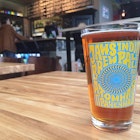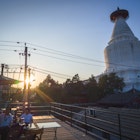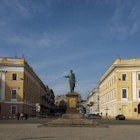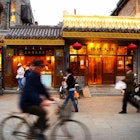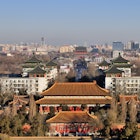On a quiet roadside in Kazan, a cluster of sky-blue towers and polka-dot domes erupts seemingly out of nowhere. The Temple of All Religions is as beautiful as it is bewildering: an Orthodox-style cupola bulges next to spiky Gothic turrets, and Islamic crescents soar over statues of the Buddha. And somehow, this architectural oddity perfectly captures Kazan’s collision of cultures.

For this is the capital of the Republic of Tatarstan, one of Russia’s 85 federal subjects. Appropriately for a region marrying Islamic and Christian heritage, the name Kazan even derives from the old Bulgar and Tatar word for cooking pot, ‘qazan’.
Travellers often judge a destination by its grand history and ancient sites. Certainly there’s no shortage of centuries-old weaponry, jewellery and crafts in Kazan’s museums. This splendour recalls the city’s past under the Kazan Khanate, a succession of rulers in what was then Volga Bulgaria. But in Kazan the modern sights are most beguiling. Recent decades have gifted it one of Russia’s most extraordinary skylines, with the Temple of All Religions on its outskirts, the Kul Sharif Mosque in its centre, and a forest of bell towers and minarets in between.

Multi-faith marvels
The Temple of All Religions’ unassuming location, 10km northwest of Kazan on the banks of the Volga, makes it an even more arresting sight. Locals are sceptical about whether grand designs for 16 spires, each representing a different faith, will still come to fruition. Artist Ildar Khanov, who conceived of the temple, didn’t live to see his brainchild completed. But even unfinished, the temple glimmers in shades from apple-green to yellow, its domes resembling generous swirls of ice cream.
Perhaps the only sight in Kazan to rival its splendour is the Kul Sharif Mosque. This cerulean spaceship of a building, both mosque and Islamic museum, seems to burst out of the Kremlin’s cobbled ground.
The building that stands today was completed only in 2005. The original mosque at this site was smashed during the 1552 siege of the city by Ivan the Terrible, a bloody standoff which brought Tatarstan under Ivan IV’s rule.

The siege that shaped Kazan
Centuries later, the battle lives on in local legend. It took weeks and thousands of lives to lay claim to Kazan; most of the city burned to the ground and only Moscow-leaning nobles survived the carnage that followed, though Kazan’s freedom fighters fought on for decades.
This moment in history shaped many of Kazan’s other buildings, like the blue-and-gold Annunciation Cathedral, quickly built among the rubble of the siege. Kazan’s very own leaning tower also dates from this era; its crazed angle is blamed on its hurried construction to meet the demand of the deposed khan’s niece, Söyembikä. Rather than wed the volatile Ivan the Terrible, stories say that she threw herself from the top – though this is likely a fable representing Tatar pride (historians are quick to correct that Söyembikä lived out her days wed to another khan).
Centuries later the Soviet era would dismantle and repurpose Kazan’s religious buildings. The city’s copper-coloured Epiphany Church spent a stint as a university gymnasium. No wonder that recent decades and painstaking restoration have been needed to return the lustre to Kazan.

Tatarstan’s unique flavours
Modern Kazan fizzes with nightlife and has a slew of places to eat well and drink deeply. And one of the best ways to experience the city’s collision of east and west is by dining around the town.
Cheburek, butter-sauteed pastry crammed with finely minced meat, is one local specialty hearty enough to fuel any number of Kremlin visits. Pastries and country staples like buckwheat kasha and dumplings swimming in meat broth, are easily found in canteens such as Chak-Chak (Baumana 7).
Horse meat still graces plates but instead of being salted for long journeys across the steppe, it’s grilled on an open flame or scattered into a Kazan pilaw (lightly spiced rice dish). Travellers looking further west will find an alarmingly authentic German experience, Lederhosen and all, at Beerhouse (beerhouse-kazan.ru). Best of all are Kazan’s fusion dishes, where European meals are reinvented with aromatic fruits and local spice – think Italian mozzarella salad with persimmon. Glamorous Pashmir (pashmir.ru) has some of the best.
In Kazan, it seems both the skyline and cuisine shine brightest where cultures meet. And with the past 20 years seeing the rebuild of the Kremlin and the toasting of Kazan’s millennium, more imaginative reinvention seems sure to follow.
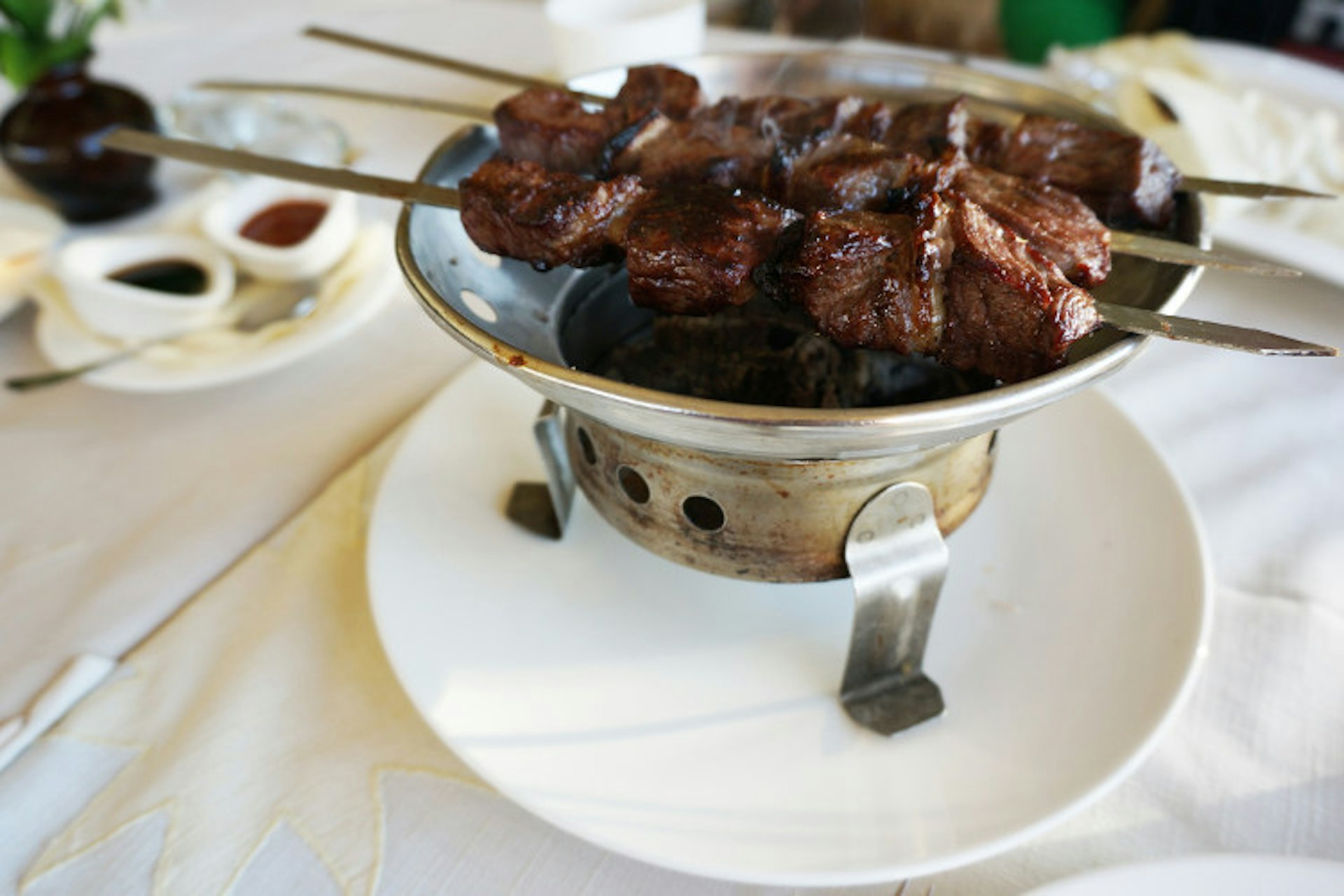
Make it happen
Kazan is a worthy extension of a trip to Moscow, requiring an overnight train (11 hours and 30 minutes). Two nights in Tatarstan’s capital allow enough time for museums, mosque visits and plenty of servings of boiled horse meat.
For Trans-Siberian Railway travellers, Kazan is a minor diversion from the main rail route between Moscow and Beijing: take the Ural line Moscow–Kazan–Yekaterinburg, instead of the Trans-Siberian via Nizhny Novgorod and Perm. Different legs of the Trans-Siberian Railway are booked separately, so you can rejoin the Trans-Siberian from Yekaterinburg onwards.
The centre of Kazan is walkable, but non-walkers can rely on an easy system of cheap trams and buses (number 2 goes to the Temple of All Religions). Boutique hotels and sauna-rich spa hotels abound along ul Universitetskaya; for a delightfully homey experience and unmissable breakfast, go with Hotel Bon Ami (hotelbonami.com).

